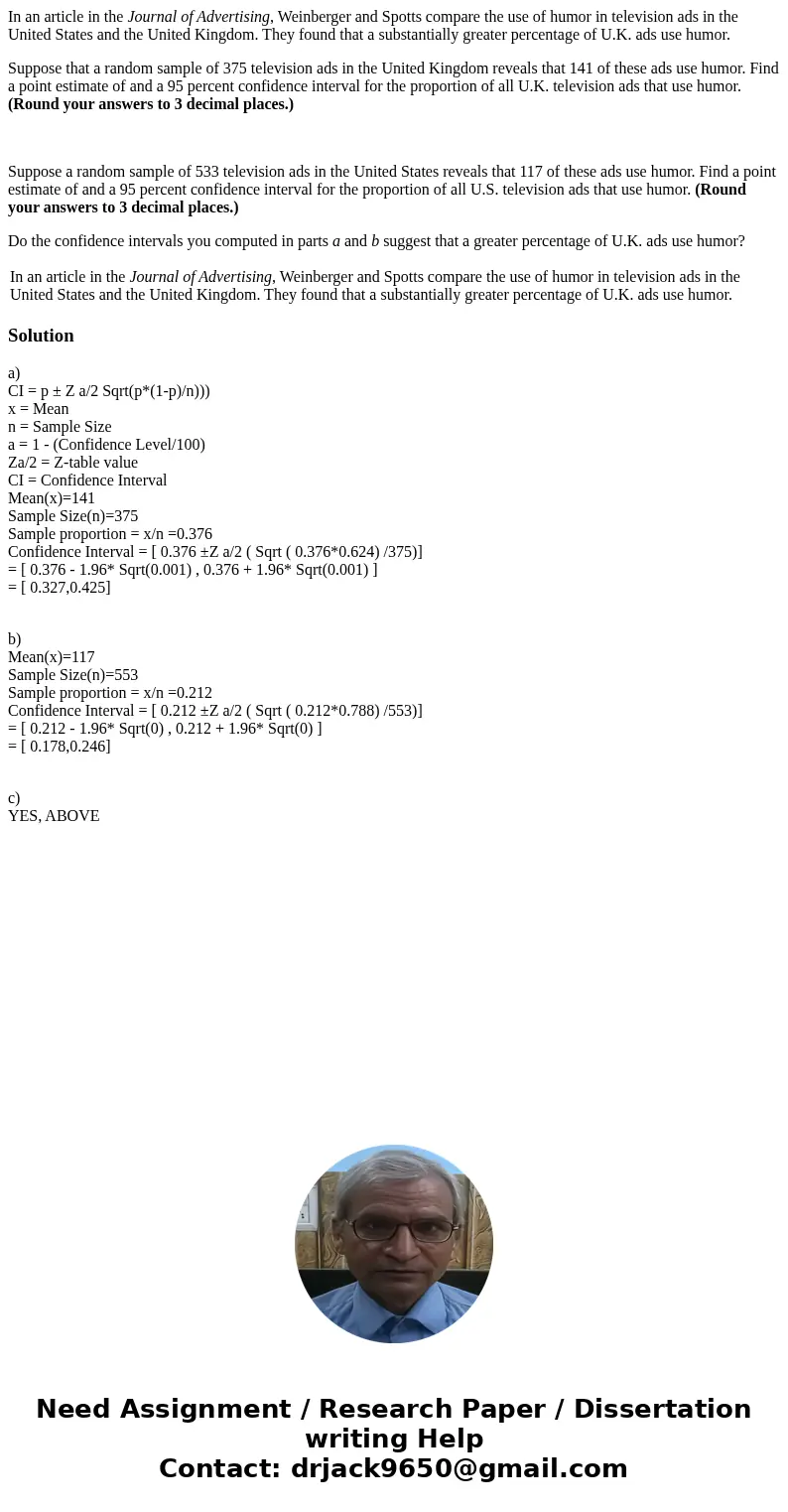In an article in the Journal of Advertising Weinberger and S
In an article in the Journal of Advertising, Weinberger and Spotts compare the use of humor in television ads in the United States and the United Kingdom. They found that a substantially greater percentage of U.K. ads use humor.
Suppose that a random sample of 375 television ads in the United Kingdom reveals that 141 of these ads use humor. Find a point estimate of and a 95 percent confidence interval for the proportion of all U.K. television ads that use humor. (Round your answers to 3 decimal places.)
Suppose a random sample of 533 television ads in the United States reveals that 117 of these ads use humor. Find a point estimate of and a 95 percent confidence interval for the proportion of all U.S. television ads that use humor. (Round your answers to 3 decimal places.)
Do the confidence intervals you computed in parts a and b suggest that a greater percentage of U.K. ads use humor?
| In an article in the Journal of Advertising, Weinberger and Spotts compare the use of humor in television ads in the United States and the United Kingdom. They found that a substantially greater percentage of U.K. ads use humor. |
Solution
a)
CI = p ± Z a/2 Sqrt(p*(1-p)/n)))
x = Mean
n = Sample Size
a = 1 - (Confidence Level/100)
Za/2 = Z-table value
CI = Confidence Interval
Mean(x)=141
Sample Size(n)=375
Sample proportion = x/n =0.376
Confidence Interval = [ 0.376 ±Z a/2 ( Sqrt ( 0.376*0.624) /375)]
= [ 0.376 - 1.96* Sqrt(0.001) , 0.376 + 1.96* Sqrt(0.001) ]
= [ 0.327,0.425]
b)
Mean(x)=117
Sample Size(n)=553
Sample proportion = x/n =0.212
Confidence Interval = [ 0.212 ±Z a/2 ( Sqrt ( 0.212*0.788) /553)]
= [ 0.212 - 1.96* Sqrt(0) , 0.212 + 1.96* Sqrt(0) ]
= [ 0.178,0.246]
c)
YES, ABOVE

 Homework Sourse
Homework Sourse